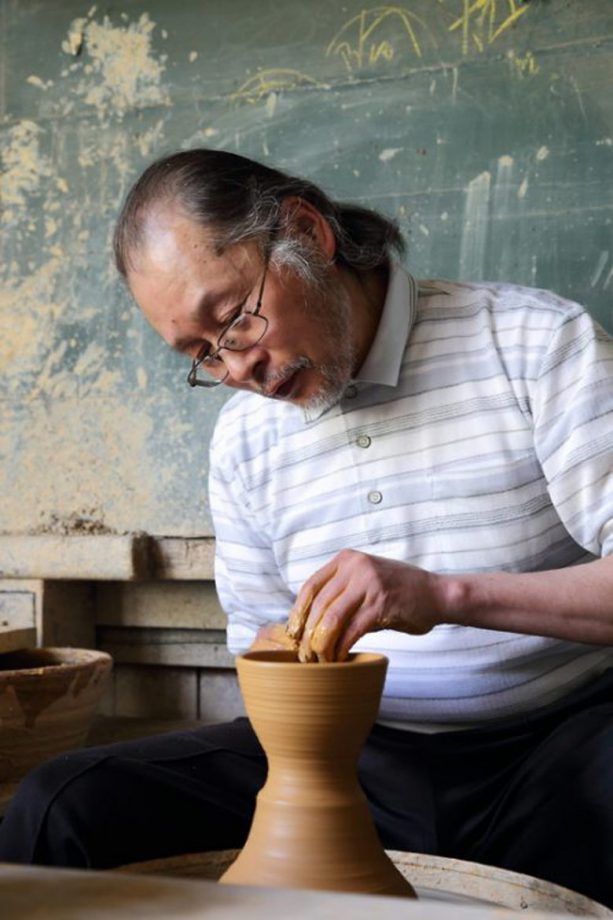
Jōshū Shimonita-yaki – Kanra Kiln
Nestled in a valley rich with the changing beauty of the seasons in Jōshū, Gunma Prefecture, Kanra Kiln was established by a ceramic artist who trained in traditional techniques. Constantly striving for greater refinement and beauty, the kiln fuses individuality and modern sensibilities into its works.
Our hope is that you will incorporate the elegant charm of Jōshū Shimonita-yaki—crafted by hand from local Shimonita clay and finished with natural ash glazes—into your everyday life, whether as fine tableware or artistic ceramic pieces. We continue our work each day with this aspiration in mind.
About Natural Ash Glaze
Except for unglazed ware known as yakishime, most ceramic pieces are coated with a glaze before firing at around 1,300°C. This process vitrifies the surface, giving it a glossy, glass-like finish.
In ancient times, ceramics did not feature such glazes. As seen in excavated earthenware from prehistoric periods, these early pieces were fired at lower temperatures. Eventually, as kilns evolved and temperatures increased, wood ash from the fuel would naturally fall onto the ceramic surface. Under high heat, the ash melted, forming a glassy coat that bonded with the clay body—this marked the beginning of natural glaze, resulting in a beautiful, vidro-like effect.
Over time, various types of glaze were developed. Among them, those made primarily from wood ash, straw ash, and clay came to be known as natural glazes (shizen-yū).
Unlike modern glazes that use heavy metals to create vivid colors, natural glazes offer subdued elegance and timeless beauty without concerns about harmful substances like lead. Their quiet sophistication continues to captivate viewers, never tiring the eye.
Though at first glance this ash glaze may appear simple, it is among the most subtle and challenging to master. This traditional natural glaze—derived from charcoal, straw ash, and earth—is at the heart of Jōshū Shimonita-yaki. We believe nothing surpasses the refined beauty of this glaze.
We also invite you to enjoy works finished in natural fly ash glaze (haikaburi), achieved through firing in a traditional climbing kiln (noborigama).
Jōshū Shimonita-yaki – Kanra Kiln
By Kumeo Itō



Artist Profile
Kumeo Itō – Jōshū Shimonita-yaki
1951: Born in Shimonita Town, Gunma Prefecture
1970: Selected for the Niki Exhibition in the painting division
1973: Traveled to France and Spain for art research; studied ceramics upon return to Tokyo
1977: Began ceramic training at Tamba-yaki, one of Japan’s six ancient kilns, under master Takeshi Shimizu
1981: Returned to Shimonita and built his own kiln, establishing the Shimonita-yaki tradition
2000: Awarded the Governor’s Prize at the Gunma Prefectural Artists Exhibition
2005: Received the Gunma Prefectural Assembly Chairman’s Prize
2009: Honored with the Gunma Prefectural Artists Association Award
2011: Received the Mayor of Takasaki Award
2014: Earned the Takasaki Board of Education Director’s Award
2016: Again awarded the Mayor of Takasaki Award
2018: Received the Takasaki Board of Education Director’s Award
2021: Again honored with the Gunma Prefectural Artists Association Award


